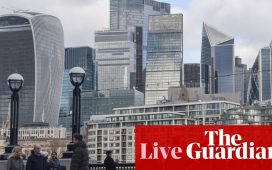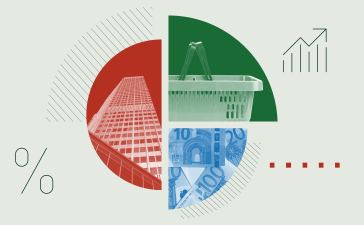The UK’s public finances are in a “very risky period” after a series of major shocks that have driven the nation’s borrowing costs to rise at the fastest rate in the G7, the Treasury’s tax and spending watchdog has said.
The independent Office for Budget Responsibility said national debt could surge to more than 300% of gross domestic product by the 2070s, up from about 100% today, and that the government was not taking measures to make big changes in the short term.
It said the government faced a “number of challenges” in meeting Rishi Sunak’s target to get the national debt falling as a share of national income within five years.
Despite promises made by successive Conservative-led governments to reduce Britain’s debt, the OBR said the objective was only achieved in three out of the last 12 years – and by a relatively small 3.4 percentage points in total.
In a downbeat assessment in its latest fiscal risks report, the OBR said other governments were facing heightened pressure on their public finances from rising global interest rates pushing up the cost of servicing debt.
However, it said the UK had the highest level of inflation-linked debt among G7 economies, making it more vulnerable to shocks, with debt interest costs rising in the UK at twice the pace of any country in the club of advanced economies between 2019 and 2022.
Separate figures from the Office for National Statistics showed the UK economy is stagnating. Gross domestic product fell by 0.1% in May, after a hit to activity from a trio of bank holidays, including for King Charles’s coronation.
Commenting on the OBR report, Rachel Reeves, the shadow chancellor, said: “This report shows just how far we are falling behind our peers, how exposed our economy is, and again highlights that the government is failing to take action in areas like energy security to help get bills down.”
With the public finances under growing strain and inflation stubbornly high, Sunak announced the government would offer a pay rise of at least 6% for millions of public sector workers, but said Whitehall departments must fund them from within existing budgets.
At the start of the year Sunak centred three of his five priorities on the economy: halving inflation, growing the economy, and getting debt falling.
However, leading economists said failure on his top priority to reduce inflation was placing all three in danger, as the Bank of England’s rapid rate rises increase the prospect of a recession, and as higher inflation and borrowing costs add billions of pounds to the government’s debt interest bill.
after newsletter promotion
The UK government’s cost of borrowing on the international debt market has risen to the highest level since the 2008 financial crisis in recent weeks – surpassing the level during the turmoil of Liz Truss’ premiership.
Richard Hughes, the chair of the OBR, said the UK had experienced a “succession of shocks” in the past three years.
“[It] has pushed up borrowing to its highest level since the mid-1940s, the stock of government debt to its highest level since the early 1960s and the cost of servicing that debt to its highest level since the early 1980s,” he said. “From this more vulnerable position the government faces grave risks and pressures.”
Hughes said the OBR’s projection of a debt to GDP ratio of more than 300% within the next 50 years could prove to be an under-estimate. “If shocks continue with the same intensity over the next 50 years, this could push debt up to 435% of GDP by the mid-2070s,” he said.
A Treasury spokesperson said: “This report reaffirms our need to be disciplined with the public finances. Additional borrowing right now would fuel inflation, push up mortgage rates and hike up debt interest repayments – diverting money away from our public services.”










